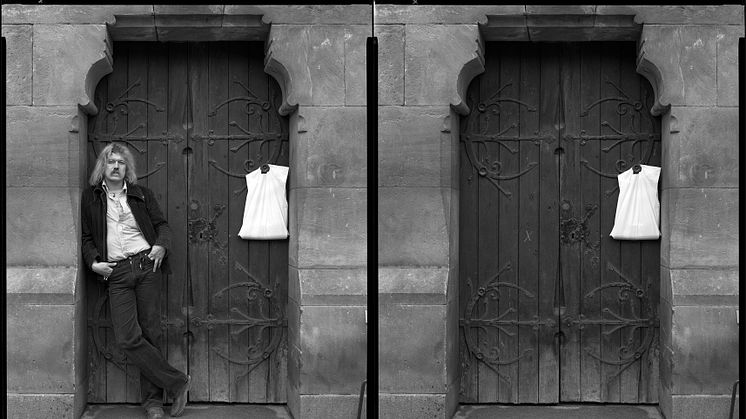
Press release -
Nationalmuseum presents a new aspect of Dawid’s art at Gripsholm this summer
Men, an exhibition of 49 photographic portraits by Dawid, opens at Gripsholm Castle on 20 May 2017. Most of the portraits are being exhibited for the first time.
Dawid (Björn Dawidsson, born 1949) is one of Sweden’s leading contemporary photographers, known far beyond the country’s borders for his abstract, avant-garde photography. He made his debut in 1973, but his real breakthrough came a decade later with an exhibition entitled Rost (“Rust”) at the former museum of photography, now incorporated into Moderna Museet. Then, as later in his career, Dawid showed how something that appears commonplace – a bent, rusty nail – can be transformed into something unique and artistically expressive. In his subsequent works he has continued to challenge established concepts and to push the boundaries of photographic art.
Dawid is not known for his portraits. Now, with the first full-scale exhibition of these works, visitors have the opportunity to discover a previously unknown aspect of his art. According to Dawid, pictures of friends were the starting point for most of the portraits. In many cases, he has used the same silhouette-like imagery as in his other works. Some of the portraits are reinterpretations of colleagues’ images. In exceptional cases, such as his self-portrait, Dawid has abandoned the constraints of form and given free rein to emotions.
Running until 27 August, the exhibition is another instalment in Nationalmuseum’s series of presentations of contemporary Swedish photographers, which began in 2006 with portraits by Georg Oddner.
The National Portrait Collection at Gripsholm Castle
Gripsholm Castle is near the town of Mariefred, 70 kilometres west of Stockholm. Construction of the castle started in 1537 under King Gustav Vasa. Designed as a fortress for defence against foreign and domestic threats, it was obsolete from the outset and never served its intended purpose.
Over the centuries the castle has seen extensive changes, beginning in the late 16th century under Gustav Vasa’s son, Duke Karl (later King Karl IX). The most recent major renovations took place in the 1890s during the reign of Oskar II. The castle’s architecture reflects a long history of changing styles, from the 16th-century Renaissance to the national romanticism of the late 19th century. Gripsholm also houses Gustav III’s private theatre.
Today’s visitors can experience 500 years of interior design through rooms and settings with period furnishings and art created for royalty.
Since 1822 Gripsholm Castle has been home to the National Portrait Collection, the oldest of its kind in the world, which now comprises over 5,000 portraits of Swedish men and women. Nationalmuseum has managed the collection since 1881.
More information
Magnus Olausson, Head of Collections and Research: magnus.olausson@nationalmuseum.se, +46 8 5195 4371
Mattias Robertson, Press Officer: press@nationalmuseum.se, +46 767 234632
Topics
Categories
Nationalmuseum is Sweden’s premier museum of art and design. The collections comprise older paintings, sculpture, drawings and graphic art, and applied art and design up to the present day. The museum building is currently under renovation and scheduled to open again in 2018. In the meantime, the museum will continue its activities through collaborations both in Sweden and abroad as well as temporary exhibitions at Nationalmuseum Design at Kulturhuset Stadsteatern in Stockholm. Nationalmuseum has partnerships with Svenska Dagbladet and the Grand Hôtel Stockholm, and acknowledges the support of FCB Fältman & Malmén.

